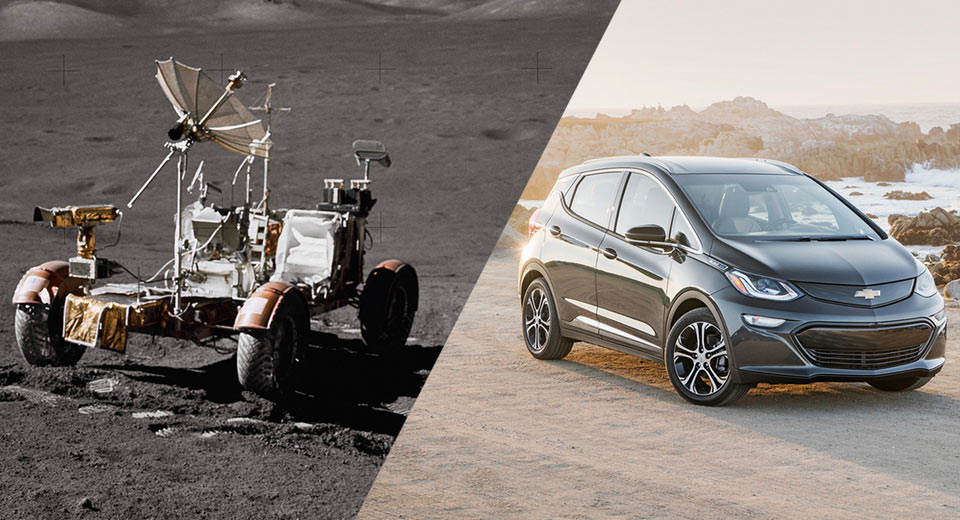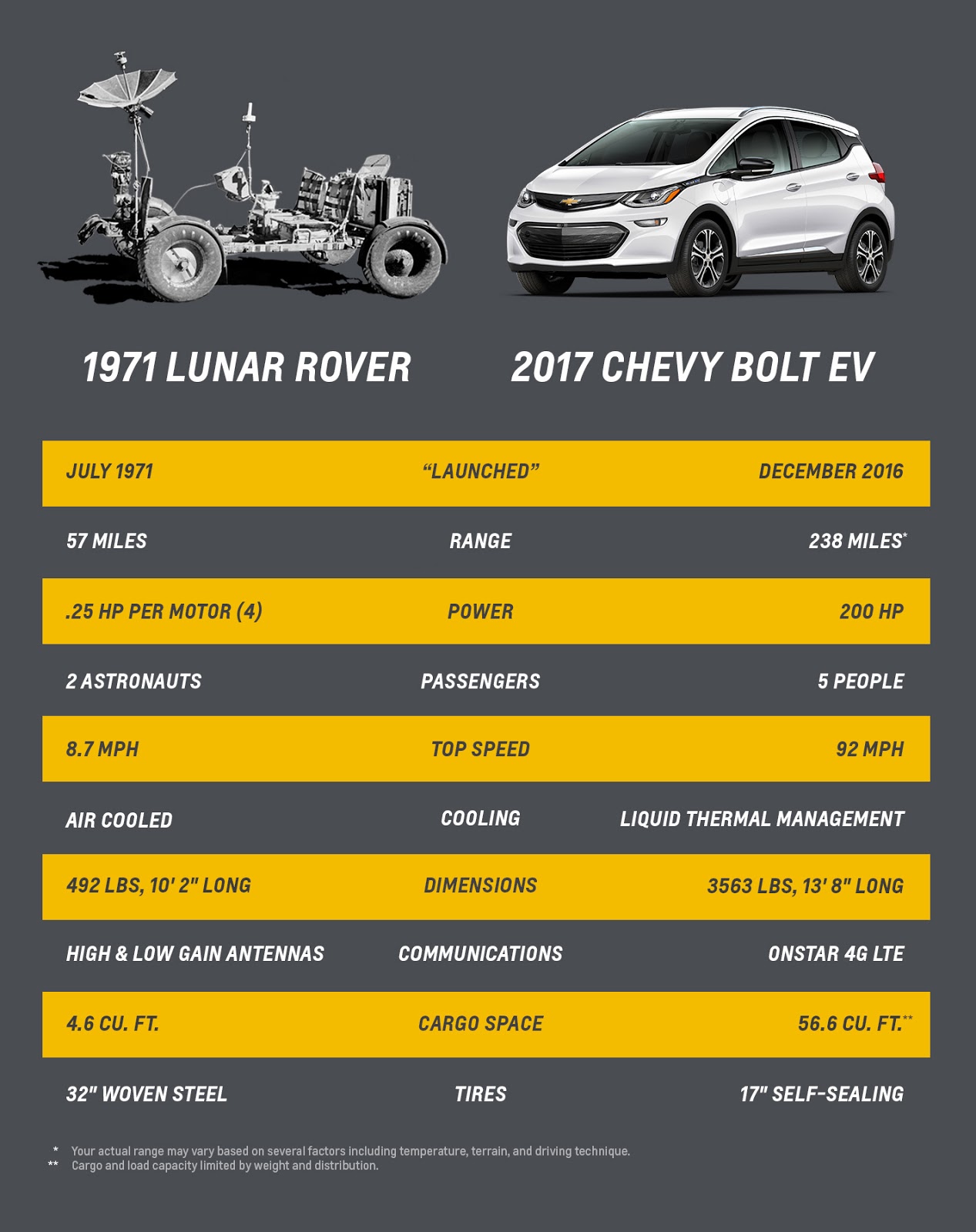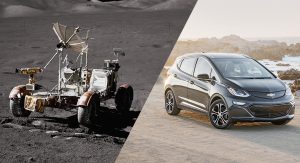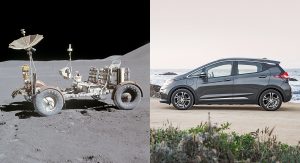Back in 1971, Apollo 15 astronauts explored the surface of the moon with the help of an electric-powered Lunar Rover, engineered in part by General Motors.
Working alongside partner companies, GM helped develop, design and test the Lunar Rover, and also helped build its revolutionary electric motor drive system, suspension, mesh wire wheels and a unique controller adapted for lunar gloves.
With that in mind, the present-day 2017 Chevrolet Bolt EV is all about making electric drive affordable for people who drive exclusively on this planet, costing considerably less than the $38 million Lunar Rover.
“When our team began engineering for the Lunar Rover, there were so many unknowns, including varied terrain, extreme temperatures and the effect of reduced gravity,” said project chief engineer Ferenc Pavlics, who is now retired. “We pushed the boundaries of automotive technology and worked hand in hand with the astronauts on the vehicle’s design.”
Pavlics also sees a connection between his work back then and Chevy’s modern-day electric vehicles.
“The Bolt EV requires a new architecture to upend the status quo on electric driving,” said vehicle chief engineer, Micheal Lelli. “We drew on our deep electrification expertise to provide Chevrolet customers the first long-range affordable electric car.”
The 2017 Bolt has a starting MSRP of $37,495 (before incentives) and offers an EPA-estimated 238 miles (383 km) of range on a single charge.






